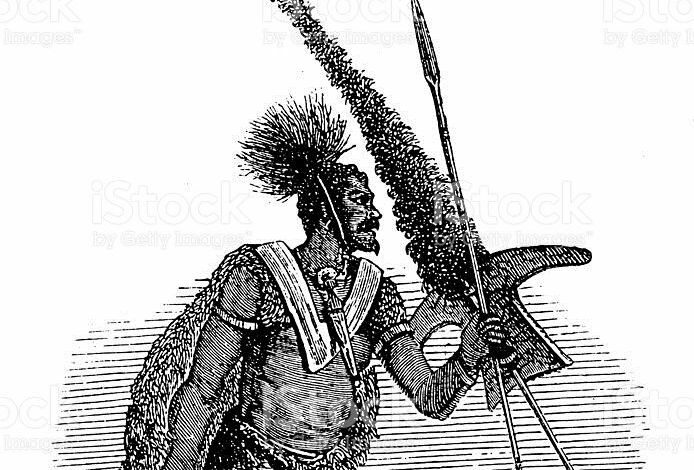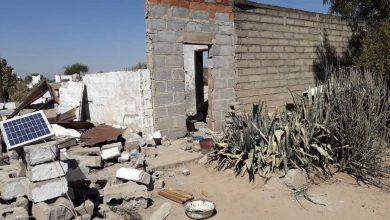King Sebetoane: The Lozi Kingdom

By Thomas Sibanda
The Sotho-Bafokeng King Sebetoane/Sebetwane established his kingdom in the area north and south of the Zambezi, including the Caprivi from about 1838 to 1864 after defeating the Aluyi-Luyana kingdom. Sebetoane’s story can be traced back to about 1822, when his people were known as Bafokeng, living on their ancestral land at Kurutlele, near present-day Senekal in the Free State. It was during the time of colonialism, pressure for land and the emergence of new states.
Sebetoane became king of the Bafokeng ba ha Patsa when he was about 20 years old. At that time they had already had to flee their homes and had crossed the Vaal River. Sebetoane persuaded his people to march north, to find a ‘place of tranquillity’ where they could settle. His first great battle victory was at Dithakong, in June 1823 with the Griquas who used rifles. Before this battle, at this place, he had had a fight with other people, the Phuting, who had also been uprooted and were seeking new lands to settle in peace.
Sebetoane won against the Phuting and amongst the prisoners that he took was a young woman of the Kollo clan called Setloutlou. He later took her as his wife. She was the mother of Sekeletu who, much later, succeeded him as king. Oral tradition says that because Sebetoane loved her more than his many wives, she was viewed as the mother of the nation and his people became known as the Makollo people or Makololo as they became commonly called by other nations.
After the battle at Dithakong, Sebetoane fled the area and started his long journey north with his people. He had already suffered defeat at the hands of Mzilikazi, Zwangendaba, Ngwana Maseko and Nqaba Msene. Sebetoane fought his way through the land of many other tribes conquering and assimilating them. As he proceeded north across Botswana, he defeated the Bakwena in 1825. Continuing north, he fought with the baHurutse and near Serowe, he encountered the baNgwato.
After the battle, the Ngwato fled west to Lake Ngami. Sebetoane went through the land of the Kalanga conquering and incorporating them. He was repelled from present-day Zimbabwe by Zwangendaba. He then went west, across the Kalahari and settled briefly by Lake Kamadou near Rakops. From there he went to Ngami where he defeated Moremi, who fled with his people north. After settling in this area Sebetoane had no peace, his people were dying of fever and his cattle were being affected by the tsetse fly. He then took his followers north through the Okavango Delta, then turned east and entered the Linyanti marshes. He made Sangwali his capital but renamed it Linyanti.
After two years he abandoned the area and continued north. He crossed the Zambezi near Kazungula, west of the Victoria Falls. He settled for a while on the fertile Batoka plains. By then his people were composed of many assimilated groups. Upon hearing of Sebetoane’s movements, while also heading to the Zambezi, Mzilikazi followed his trail, leading to the famous battle of Thabana ea basari, in the Kalomo region, which Sebetoane won. Sebetoane then moved further north into the kingdom of the Aluyi-Luyana.
He overthrew the fragmented Aluyi-Luyana kingdom in present-day southwestern Zambia, he made Naliere his capital, where the Kabompo River joins the Zambezi by the Angola border. He called his kingdom Rotse referring to the vast plains. The locals pronounced Rotse as Lozi. In 1850 Sebetoane returned to Linyanti to meet David Livingstone, who arrived from the south in June 1851. Soon after Livingstone’s arrival, while Sebetoane was riding Livingstone’s horse, he fell. The fall led to the opening an old wound to his chest. He died on 7 July 1851.
The collapse of the Bafokeng ruling class eventually happened in 1864 when they were ambushed in a surprise raid by the Lozi under Sipopa, one of the sons of their former king, Mulambwa. The Bafokeng aristocracy was completely dismantled.In 1865 Kabende Simata was appointed as the chief of the Bayeyi, Mafwe, Mbukushu and Matotela. King Sipopa ruled over the vast empire and was succeeded by King Lewanika, who was king from 1884 to 1916. King Lewanika was a political maverick who built Barotseland.
Through conquest and assimilation of many people groups and imposition of the Sotho language by the Bafokeng aristocrats, the Lozi language spoken in Zambia evolved from a mixture of Luyana and Sotho. Lozi is therefore closely related to Sesotho, Setswana and SheKgalagari.
Distinguished as both a warrior and a statesman, Sebetoane was able to consolidate his military gains by his generous and just treatment of the conquered peoples. Through his policy of polygamy, Bafokeng men had to marry many women to multiply Sotho numbers. A maverick politician, Sebetoane maintained a peaceful kingdom, despite the numerical disadvantage of his own Sotho people. Historians often draw similarities between the emergent nation-building models of Sebetoane, Mzilikazi, Soshangane and Zwangendaba in the 1800s.
Thomas Sibanda is an African History Twitter /X-Blogger. For more history threads and to contact him follow his handle on Twitter/X – @RealMzalaTom.






